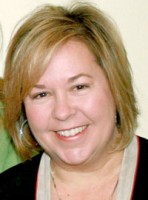
“In general what I’ve been seeing with some of the secondary stations,” says Diane Richey-Haupt, Owner of Diane Richey Promotions, “is different layers in the market. Many of the stations we deal with in an Activator or Indicator situation are highly consulted which makes it tough. On the MusicRow panel we find the stations are not as affected by consolidation, although it is true they are being asked to do more now than they did a few years ago. Thankfully, the stations remain passionate about listening to new music. New artists are having success and MusicRow seems to be popping them out ahead of where they come in on the Billboard or MediaBase charts. People/stations there are listening and making room for new music.”
“Right now I’m noticing the speed of the MusicRow chart has picked up and that is a good thing,” says Rick Kelly, VP Radio Marketing Marco Promotions. “On this week’s chart the average age of a record in the Top 5 is 14-15 weeks, probably because they are all really big acts and/or reactive records. But everything on the chart seems reasonably young and there are very few 40-week records. We are also seeing an interesting and heartening mix of independent and baby acts. The major heritage acts and superstars are still well represented, but the chart shows diversity.”
Songs played on major market radio are largely monitored while the smaller market station reports are submitted directly by programmers. “They are two different animals in a lot of ways,” says Kelly. “With a non-monitored chart, particularly a projected spin chart like MR, things seem to pick up steam more quickly. By the same token, on monitored charts, records that still appear to be growing can lose bullets. A song can have adds and positive spins, but be down in audience. People tend to have a knee jerk reaction and stay away from a record if it is un-bulleted, even though it might be growing or at least maintaining. Sometimes that microscope on every impression is not indicative of the health of a record.”
Richey-Haupt has championed secondary radio since forming her firm 25 years ago, but notes that, “living in a non-monitored world,” can present situations from time to time. Recently she found a few stations that possibly weren’t reporting some of the superstar artists they were playing. “It’s almost with an attitude of, ‘if they don’t call me then they don’t care,” she says. “I can’t imagine having a great sounding station and not playing some of these superstar artists–whether they call them or not.”
“There may be some stations out there under reporting for some reason,” says Kelly. “I haven’t encountered any. Maybe they don’t pay attention to some records because those records are not being brought to their attention.”
But Richey-Haupt asserts the good far outweighs the problems. “There’s only a handful of negative out there compared with a whole boatload of wonderful. The secondaries are where you find hugely passionate people that often have listened to the record even before you ask them about it.”
Kelly sums the attraction of secondary radio. “For an indie or a small label to succeed at monitored radio now seems to be a Herculean and near impossible task,” he says. “The secondary arena has been getting more crowded with people trying to break there because they realize how monumentally expensive it is when trying to break at the majors. It’s definitely easier to make inroads at secondary radio than mainstream.”

About the Author
David M. Ross has been covering Nashville's music industry for over 25 years. dross@musicrow.comView Author Profile




